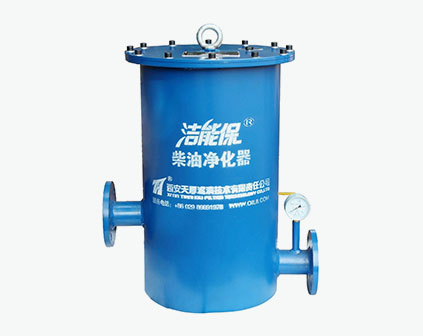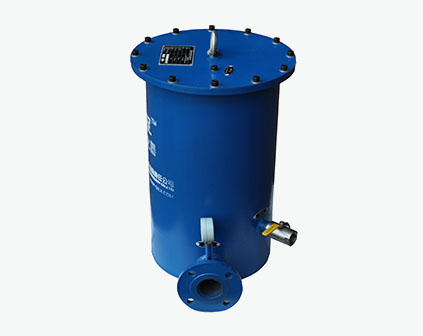Structural Characteristics
The product is made of all steel and features a single-barrel structure. The oil inlet and outlet ports are connected by standard DN50 and DN80 flanges. It has a simple structure and is easy to assemble. It is also equipped with a high-precision pressure indicator (or differential pressure alarm device), which can monitor the system oil pressure in real time.
Installation of diesel purifiers
The diesel purifier is very easy to install. When in use, just connect it in series to the fuel supply pipeline according to the reserved oil inlet and outlet interfaces. Note that the oil inlet and outlet directions must not be reversed. When using and replacing the filter element for the first time, pay attention to venting. The exhaust valve is on the end cover of the barrel.
Replacement of the filter element
Under normal usage conditions, if the purifier is clogged and the transmitter alarms (or the pointer of the pressure gauge points to negative pressure during operation), the engine will experience insufficient oil supply at this time, and the filter element should be replaced immediately.
Method for replacing the filter element
Close the oil inlet valve and open the upper end cover.
② Open the ball valve of the sewage outlet to drain all the dirty oil.
③ Loosen the fastening nut at the top of the filter element. The operator should wear oil-proof gloves, hold the filter element tightly, and remove the old filter element vertically upwards.
④ Replace the filter element with a new one, place the upper sealing ring (with a built-in sealing gasket at the lower end), and tighten the nut.
⑤ Close the ball valve of the sewage outlet, cover the upper end cover (make sure to place the sealing ring properly), and tighten the fastening bolts.
First, open the oil inlet valve, then open the exhaust valve. When oil comes out of the exhaust valve, immediately close the exhaust valve, and then open the oil outlet valve.


